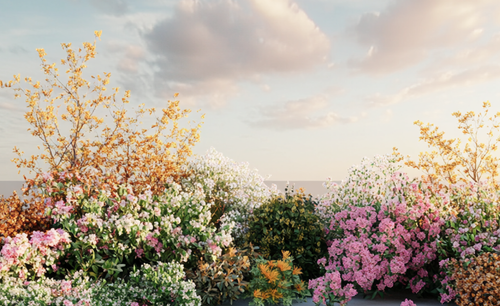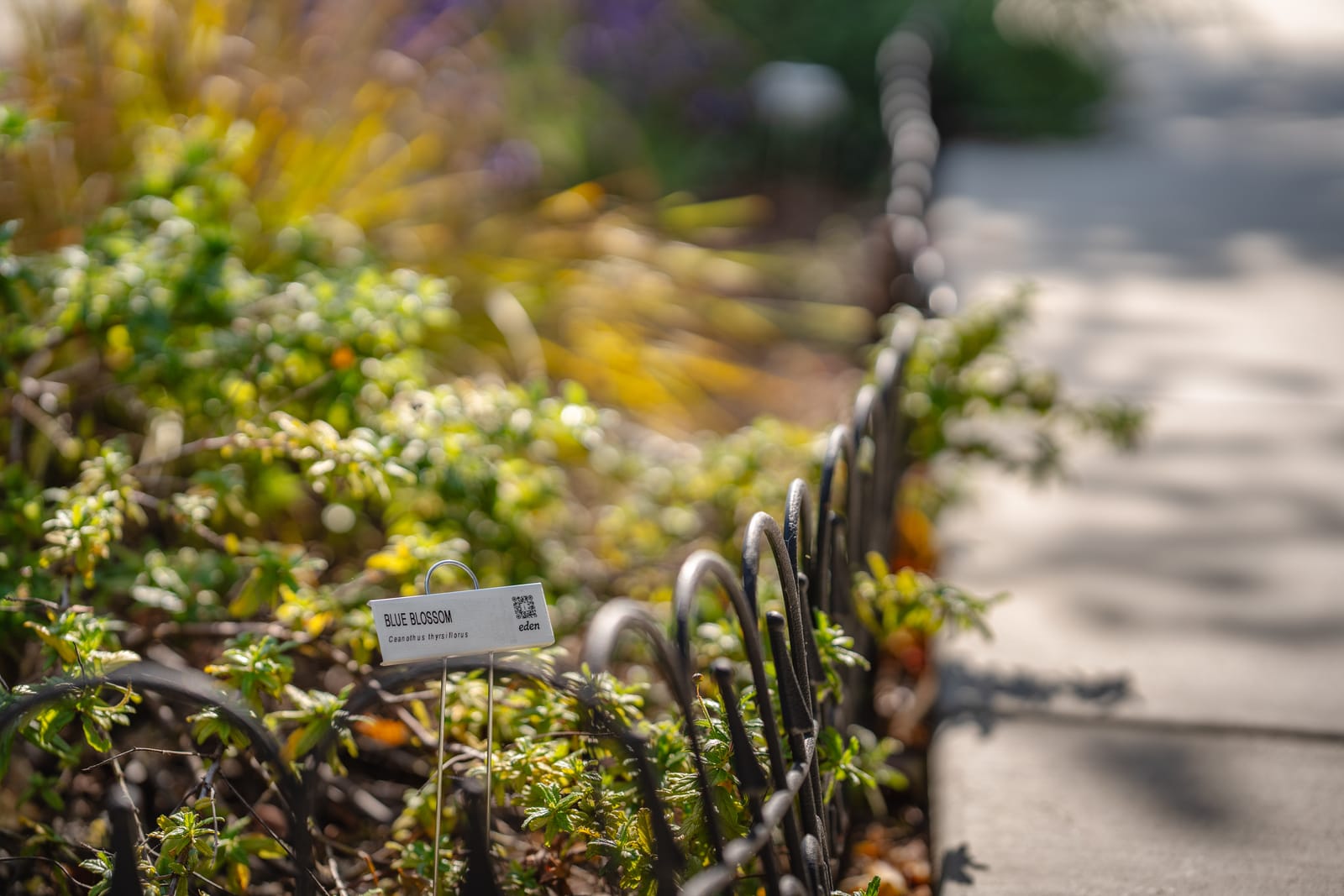Sidewalk gardening in San Francisco comes with its own set of challenges: harsh sun, wind tunnels, dry soil, compact spaces — and don’t forget, most curb strips are one accidental footstep away from being trampled.
That’s why The Thrifty 150 plant list exists: to make native gardening accessible, affordable, and practical for urban spaces. These plants aren’t just pretty. They’re tough, climate-smart, and priced for the people — often under $20 per plant at local nurseries.
At Eden, we use many of these species to design sidewalk gardens that thrive in San Francisco’s unique microclimates. Today, we’re highlighting three standout performers you’ll see again and again in our projects: Yarrow, California Poppy, and California Buckwheat.
Yarrow (Achillea millefolium)

Yarrow is the sidewalk garden workhorse you never knew you needed. With soft, fern-like leaves and umbrella-shaped flower clusters, it blends function with texture beautifully.
Why We Love It
- Tough as nails. Drought-tolerant, sun-loving, and can handle light foot traffic — ideal for curb strips.
- Pollinator paradise. Bees, butterflies, and even beneficial predatory insects love it.
- Low maintenance. Cut it back once a year and it comes roaring back in spring.
How We Use It
We use yarrow as a visual binder in sidewalk gardens — filling in between taller structural plants and ground covers. It’s great for softening edges, adding subtle color, and giving gardens that cohesive, “woven together” feel.
Pro Tip
Stick with native yarrow species (not hybrids) for the best drought resilience. Its bloom cycle also aligns beautifully with poppies and buckwheat.
California Poppy (Eschscholzia californica)

No native plant list would be complete without our state flower. The California poppy brings instant charm — bold orange blooms, fine blue-green foliage, and the kind of cheer that makes people stop and smile.
Why We Love It
- Self-sowing superstar. Once established, it spreads naturally (but never aggressively).
- Thrives on neglect. Loves poor soil, needs no irrigation once rooted.
- Seasonal impact. Blooms from early spring through summer and even into fall in warmer spots.
How We Use It
We use poppies to bring visual lift to sidewalk gardens — bold color without height. They contrast beautifully with green or silver foliage and soften harder materials like pavers or concrete curbs.
Pro Tip
Plant poppies in sunny spots and let them go semi-wild. They’ll reseed next season and start to naturalize your strip.
California Buckwheat (Eriogonum fasciculatum)

If yarrow is the workhorse and poppy is the showstopper, California buckwheat is the backbone. This evergreen shrub provides structure, long bloom time, and an unmatched ability to support local pollinators.
Why We Love It
- Pollinator magnet. Its tiny blooms support dozens of native bee species.
- Evergreen structure. Unlike many wildflowers, it looks good year-round.
- Hardy as heck. Survives in rocky soil, heat waves, and long dry spells.
How We Use It
Buckwheat is our go-to anchor plant. We use it to build a foundation for sidewalk gardens — something strong enough to hold the composition but soft enough to feel natural. Its seed heads age gracefully, giving you beauty long after blooming ends.
Pro Tip
Leave the seed heads standing into fall and winter for structure and subtle color variation. Birds and beneficial insects love them too.
The Power of Simple, Smart Choices
Yarrow. Poppy. Buckwheat.
Yarrow, poppy, and buckwheat are three marquee examples that prove you don’t need an expensive nursery haul to create a thriving, low-maintenance sidewalk garden.
With the right design and the right species, you can transform even the toughest curb strip into a resilient, eye-catching landscape that supports pollinators, softens concrete, and boosts your block’s beauty.
Ready to build your own native plant palette for San Francisco’s sidewalks?
Start with Eden → edenstudio.ai
Let’s make concrete bloom — one native plant at a time.






